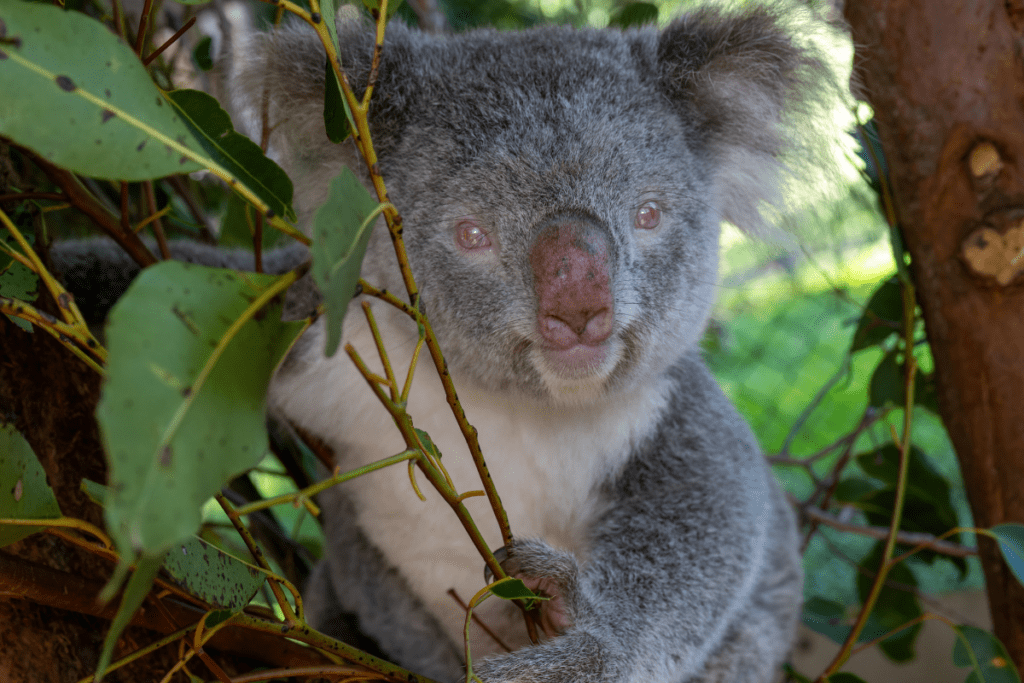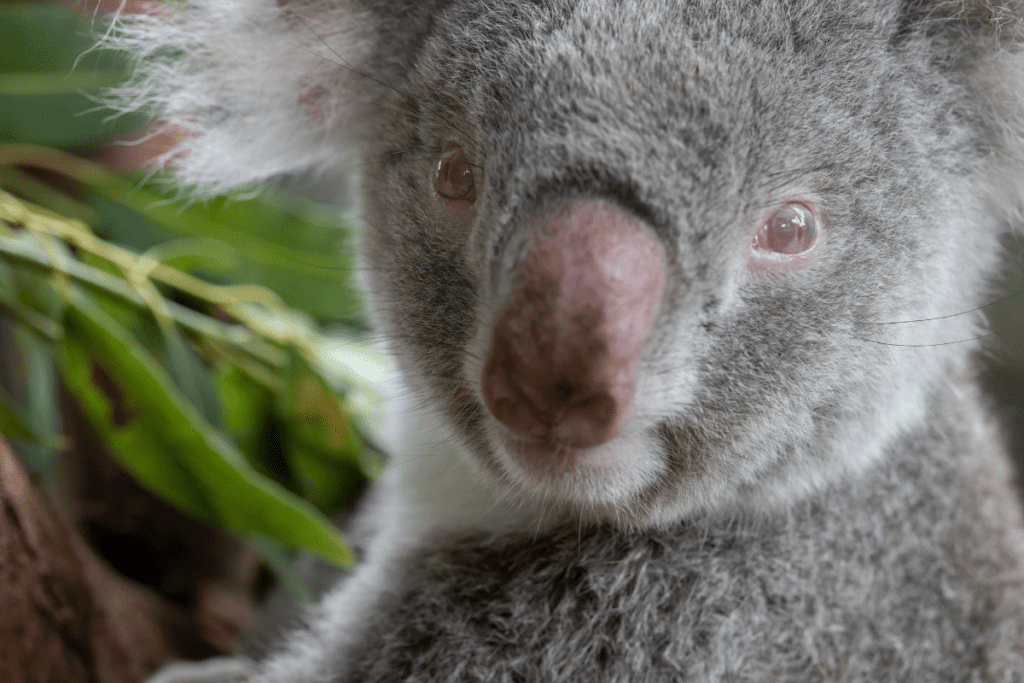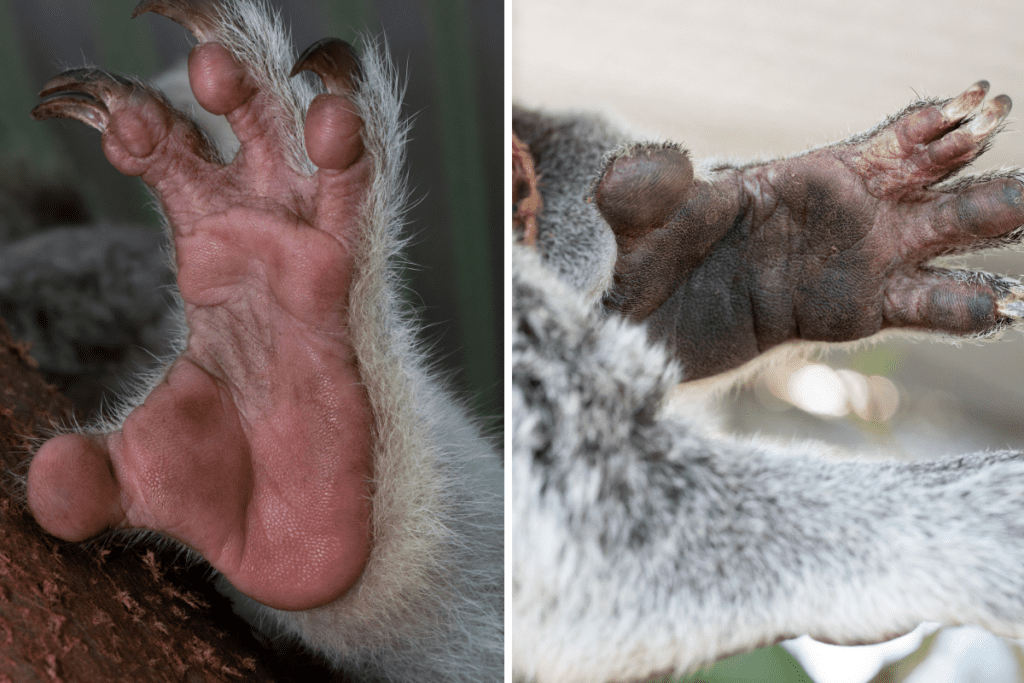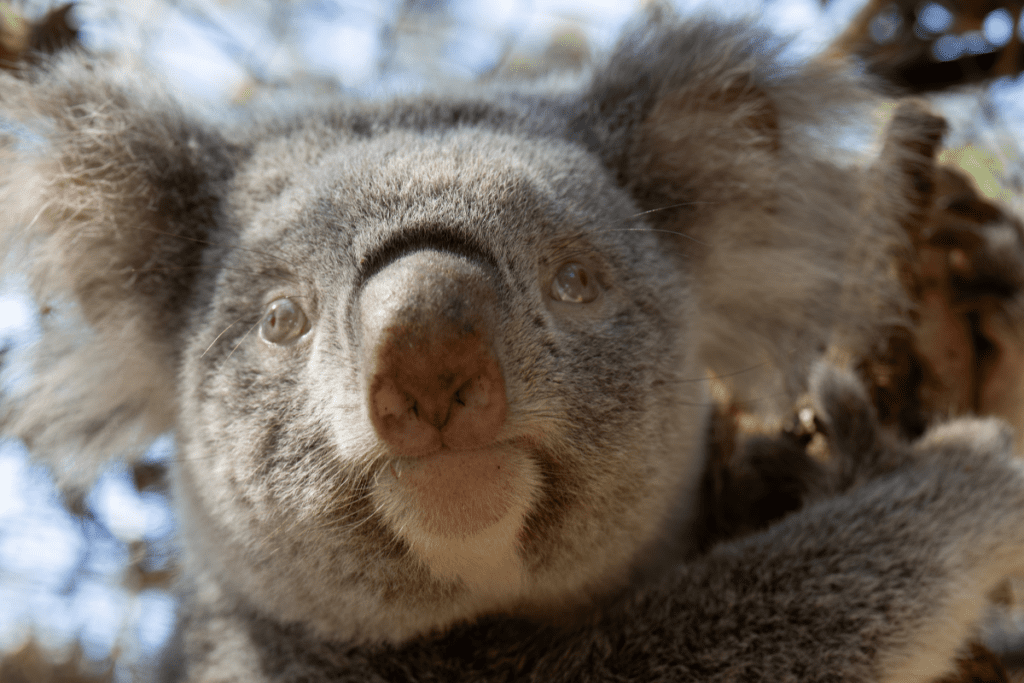Would you like to know some fun facts about koalas? Of course you would! What about the stunningly unique Polar Star who became a permanent resident with Friends of the Koala last year?
We recently had a question over on our YouTube account about Polar Star’s partial albinism. The question was – “I wondered if her nose could get sunburned?“
In short the answer is yes, Polar Star’s partial albinism could make her more sensitive to the sun.
What causes albinism?
Albinism in mammals occurs when cells can’t produce melanin – the pigment needed to colour skin, eyes and hair. It is a genetic condition passed from parent to offspring and both parents must carry the gene. Animals with full albinism have a white appearance with pale eyes or eyes that seem pink or red. Although Polar Star is not white, she is pale in comparison to other koalas and her eyes, unlike other koalas are blue. This partial albinism is called leucism.

How is albinism inherited?
Polar Star’s mum Vienne did not have her pale appearance and her father probably didn’t either but together they would have both carried a recessive gene to cause the mutation.
How common is albinism in animals?
True albinism in animals is fortunately very rare. It causes a lot of additional challenges for survival including blindness or poor vision and because of their bright colour more vulnerable to predation. Partial albinism or leucism is more common and less conspicuous but still leaves animals at risk. Polar Star for example was in generally excellent health when she was rescued but she most certainly is either fully blind or at best can only see shadows. This means that she could have survived in the wild but under the Code of Practice she could not be released back in the wild.
Back to the question – “I wondered if her nose could get sunburned?“

Fun facts about koalas – Polar Star and the lack of melanin on her nose
Due to her partial albinism, Polar Star’s fur is paler than her peers, her nose is a light brown/pink compared to black in her peers and her eyes are pale blue instead of brown. Polar Stars light brown/pink nose is due to the absence of melanin. Melanin provides protection against the sun’s harmful rays. The lack of pigment in Polar Star’s nose could indeed cause her nose to be more sensitive to the sun and can lead to skin damage, sunburn and even skin cancer. In Polar Stars enclosure as well as all of the other enclosure we offer the koalas a lot of shade.

What does Polar Star’s future look like?
Polar Star became a permanent resident at Friends of the Koala thanks to a specially obtained licence from The National Parks and Wildlife Service (NPWS). Polar Star currently lives in run 1 with her friends – Charlotte and Ivy. All three girls seem to get on well and are thriving. Polar Star is also available to adopt from our Koala Adoption program along with her friends Ivy and Charlotte.
Further reading and fun facts about koalas!


